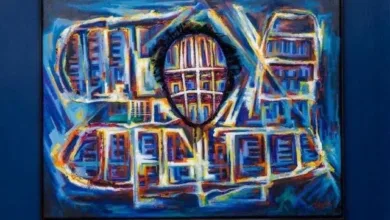Fighting The Odds – The Triumph Of Black Artists & Their Art
By: Winston Donald – Living Writer
KINGSTON, Jamaica – Five years ago, during Black History Month I learned that an Afro – American Painter whose works were rejected in yesteryear because he fell on hard times, had no white connections and being a man of colour was now being highly touted as one of the greatest Artist in modern time. That man was William H. Johnson whose works are so numerous , his family is now trying to retrieve over 1300 pieces that were given without consent to the Smithsonian Institute.
Racism Against Black Creativity
The racist and prejudiced world in which we lived and in which we are still living has severely hampered the potential of our black people to reach its zenith. Nowhere else has the black diaspora been so disenfranchised and been prevented from sharing the pie or capitalizing on their skills, their artistry, their professions and their vocations than in North America.
However Europe and the ruling class in Latin America are equally guilty in their mistreatment of its black population. Britain while not directly destroying the arts profited immensely by robbing the African nations (including North African Egypt ) of the most treasured artifacts , now cached in the British Museum on the pretense that she (Britain) has the best preservation houses to keep the arts and artifacts alive!! Let the world know that the Ashanti Golden Chair, the valued artifacts of West Africa, South Africa and East Africa and the numerous ancients books of Ethiopia are on display at the British Museum.
The disenfranchisement and prejudices were not restricted to preventing economic upliftment but were also geared to destroy the artistic and creative energies of black people. In addition white society tried to destroy many creations of black artisans in the west. For generations the indignities suffered by Black artists did not damper their creative spirits. They just could not destroy the God given gifts of black folks.
Despite the odds and the racism practiced our artists have triumphed and today their works are highly recognized and they are accepted as icons not only in the Black world but internationally.
The following artists and their works have created a excellent impression among collectors, galleries, museums and general art lovers.
Afro Cuban – Wilfredo Lam (1902-1982)
Lam was born in Cuba , the son of a Black mother and Chinese father. A painter , ceramist and sculpture he sought to revive the enduring Afro-Cuban spirit.
Lam has been described as the best international name from the Caribbean in the area of paintings. A contemporary of Pablo Picasso , he was unfairly treated at times by the powerful modern artists because he was not white. His interaction with international artists, however, and his contacts with African superstitions and celebrations led him to develop his unique artistic style characterized by hybrid figures.
Moving to Madrid in 1923, Lam underwent studies by the Curator of the Museo del Prado, the teacher of Salvadpr Dali. His early work was in the Modernist Spanish Tradition . By the 1930’s Lam was influenced by Surrealism and the work of Henri Matisse. Siding with the Republicans in the Spanish Civil War, he designed posters for the war effort while drafted to defend Madrid.
Lam was introduced to Picasso, becoming a close friend of him and was subsequently introduced to the big names in international art such as Georges Braque, Henri Matisse, Fernand Leger, and Joan Miro.
Picasso had a tremendous impact on Lam’s life and works and their closeness led to many exhibitions by both at international galleries in Europe and the USA. Later he dabbled in Cubism, but he never ignored the influence of Africa.
Lam was very concerned at how Afro Cuban art was treated by its denigration and packaging as tourists art. The Cuban bourgeoisie, plantocracy and military authorities looked down at the art but that did not deter the practitioners as Afro influences permeate Cuba’s life, even when many “dissed” the black populace. In essence Lam hated the oppression meted out to Afro Cubans by the pre-Castro authorities. He spoke out in favour of the small man. He even supported Castro as the previous regimes had been racist towards the Cuban black population and its art.
In 1964, he was awarded the Guggenheim International Award and between 1966 and 1967 there were many retrospectives of his work throughout Europe. Wifredo Lam died on September 11, 1982 in Paris. Having had over one hundred personal exhibitions around the world, Lam had a well established reputation by the time of his death.
Some of his most famous works are: Anamu (1942); The Jungle (1943); Mother and Child; Untitled (1945) ; Le guerrier (1947); Le Reve (1947); Exodo (1948); Lisamona (1950) and El tercer Mundo (1965-66). Lam’s works can be seen at The Museum of Moden Art, Brussels, The Museum of Contemporary art, Chicago, Lowe Art museum, Miami, Museum of Modern Art, New York. And at the Museo Nacional de Bellas Artes, Havana.
The North American Legacy
The legacy of Black American artists has become an interest of scholars in the last forty years. Prior to this time there is a scarcity of documentation and research. Rhode Island (New England) had two established black artists who achieved National recognition, Edward Bannister (1828 -1901) and Nancy Elizabeth Prophet (1890- 1960) . We will look at the more prominent one first Edward Bannister (no disrespect to the female).
American Drama, William H. Johnson – Witty and Poignant Scenes
Johnson was one of the most foremost artist of his generation. He was a modernist. Born in Florence, South Carolina he was a keen artist at early age. His styles are diverse as the realist/impressionist schools and his influence can be felt beyond his art. Johnson migrated north and arrived at Harlem at the during the start of the great migration .Upon graduation in 1926 from the National Academy of Design, the highly acclaimed Art institute in Harlem.
Johnson moved to Paris under the urging of Hawthorne his teacher, mentor and financial supporter after he failed to get a scholarship to Europe because of his race. Johnson’s early works were of a high standard of Expressionism
He went back to the states and he received the prestigious Harmon Awards by exhibiting six paintings. He received the gold. In Florence,South Carolina while painting “The Jacobia Hotel”. he was arrested by the white police. It left him upset and he moved to Denmark and later North Africa.
In 1930 he married a Danish Potter and textile artist Holcha Krake. In Scandinavia he created hundreds of works, exhibited widely and developed strong reputation. Sales were very strong. Traveling throughout Europe he was able to visit the museum and galleries but racism always lurk its head at him. He returned to New York with his wife fearing Nazism in Europe especially since Holcha was white.
Returning to a depression era America he worked for the New Deal Works Project Administration. The WPA allowed him to paint profusely the events, history and peoples of the African American Community. Johnson works cast a urban scene within a rural style of painting. Johnson’s wife being white had the social and racial connection he would not have. Through her he was able to sell many paintings at good prices to high society of suburban and upstate New York. But New York was also racist. In 1943 Holcha died of breast cancer. He came under intense racism after the death of his wife. He shifted from expressionism and painted in a “primitive” style.
With the coming of war, public attention was diverted as art was slighted by many. Johnson painted patriotic pictures of soldiers. Johnson went back to Europe but mental illness started to affect him. Back in South Carolina in 1944 his situation worsened. He was confined to a mental hospital. Johnson for the rest of his life continue to paint and sales from his work he requested to be sent to his family. The proceeds were never sent to his relative. Today the Smithsonian Institute has over 1000 works for him. Until recently the family, subsequent generation is trying to retrieve his work which genuinely belongs to them. His paintings and woodcuts are also at the Philadelphia Museum of Art and at Howard University
Some of his works were: Swing Low Sweet Chariot, Café, Going to Church, Go to Harlem, Flowers in a Gray Vase, Draby Church, The Jacobia Hotel; Lofoten, Norway – Midnight Sun, Willie and Holcha.
The Art of Canadian Born Edward Mitchell Bannister (1828-1901)
Edward Mitchell Bannister born in New Brunswick Canada in 1828. He was the son of a Black Barbadian father. He later moved to Boston and then later settled in the state of Rhode Island, USA.
Bannister’s determination to become a successful artist was largely fueled by an inflammatory article he read in the New York Herald in 1867, that stated “ the negro seems to have an appreciation for art while being manifestly unable to produce it.”
He was a founder and active member of Providence Art Club. He specialised in painting nature scenes. His tonalism and predominantly pastoral subjects were influenced by the French Painter Jean – Francois Millet and the Barbizon school in France. He was the first black man to receive an award at the prestigious Phiadelphia Centential Exposition in 1876. When he learnt that he had won and approached the officials he was resented because he was a “darkie”. The judges wanted to rescind the prize because they discovered he was black. His competitors upheld the decision and he was awarded his prize. He was fortunate they did not hurt him and they respected by bowing to him as the work he executed “Under the Oak” was a masterpiece. For almost a century Bannister was completely forgotten due to racial prejudice. With the force of the Civil Rights Movement in the 1970’s his works were again celebrated and widely collected.
Edward M. Bannister is one black artist whose works are on par with any masters of the 20th century. Works such as After the Shower; Approaching Storm; Child with Birds and Dog; Cows; Cows in the Forest; Driving Home the Cows; Crushed; Dorchester 1856; Homeward; Landscape; Landscape with Cows; Landscape near Newport, R.I.; Fishing Shacks, and Herdsmen with Cows are just a few of his mastery accomplishments. He also painted portraits, still life, genre scenes, biblical and mythological scenes.
In 1978 Rhode Island College dedicated its art gallery to Bannister with an exhibition titled: “Four from Providence – Alston, Jennings, Bannister and Prophet.” His works can be seen at Howard University, Smithsonian Archives of American Art, Smithsonian American Art Museum and Museum of Rhode Island School of Design.
Bannister was the only Black artist of the late nineteenth century who developed hi talent without going to Europe.
Nancy Prophet
Nancy Prophet born in Rhode Island of African and Native American Indian descent matured into a sculptural artist during the Harlem Renaissance. Immediately after graduating from Rhode Island School of Design she began advertising her name in exhibits in Newport and New York. Gallery owners found her appearance “socially unacceptable”.
Taking a stand to this racial discrimination, Prophet refused to succumb to the times and she denied galleries her artwork where she was not accepted. Leaving behind the racial turmoil she faced in the United States, Prophet moved to Paris in 1922 to further study her newfound passion and claim the credit her work rightfully deserved. Prophet found her calling in marble sculptures of life-size faces that vividly portrayed various moods. While studying in Paris, she met fellow artist Henry O. Tanner who commended Prophet’s art and referred her work to be entered to compete for the Harmon Foundation prize, which she won.
Prophet returned to the US in the 1930’s and found her work began gaining acceptance, proving that blacks were great artists. She was invited to exhibit her works in galleries in New York and Rhode Island. She later moved to the South to teach art as a professor at Atlanta University but faced the same racism in the South. She moved back to Rhode Island in 1945 to escape the South’s rejection and attempted to regain her status as an artist. Due to lack of networking and contacts, her attempts failed and she was forced do domestic work. She died in 1960 but some of her exhibits are as follows to:
Exhibition:
1924-27: Paris August Salons
1931-32: Salon d’Automne
1930’s: Harmon Foundation and Whitney Sculpture Biennial [America]
1945: Providence Public Library
1978: “Four from Providence”, Bannister Gallery of Rhode Island College
Conclusion
We hope that mankind especially the white world will not see it fit to disenfranchise and hamper those of colour who are blessed with art talents. We hope for and desire a civil and humane world that deal with mankind by merit rather than skin hue. If mankind had been more tolerant and generous to others of a different hue the world of Fine Art would have been for the better.





